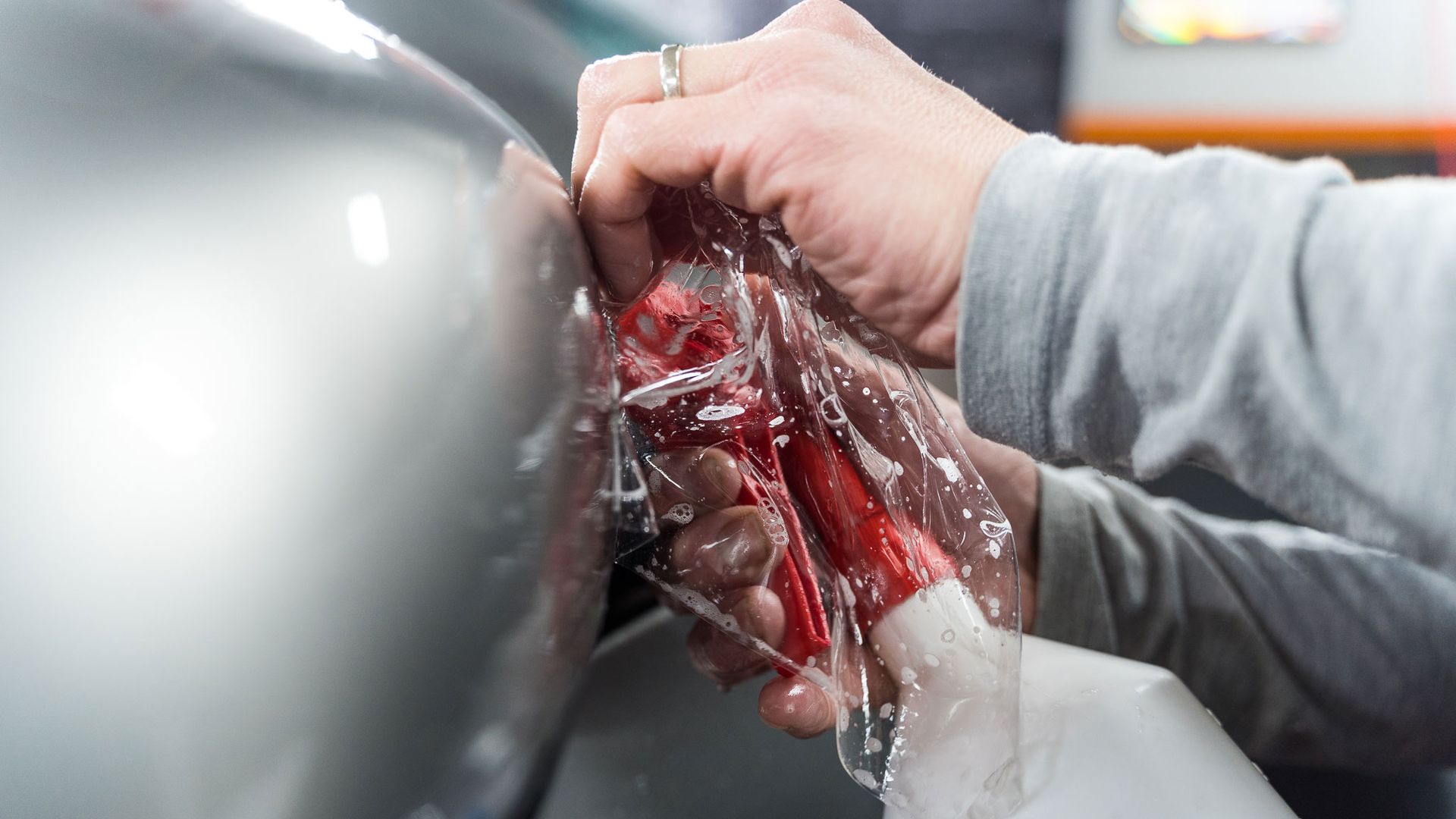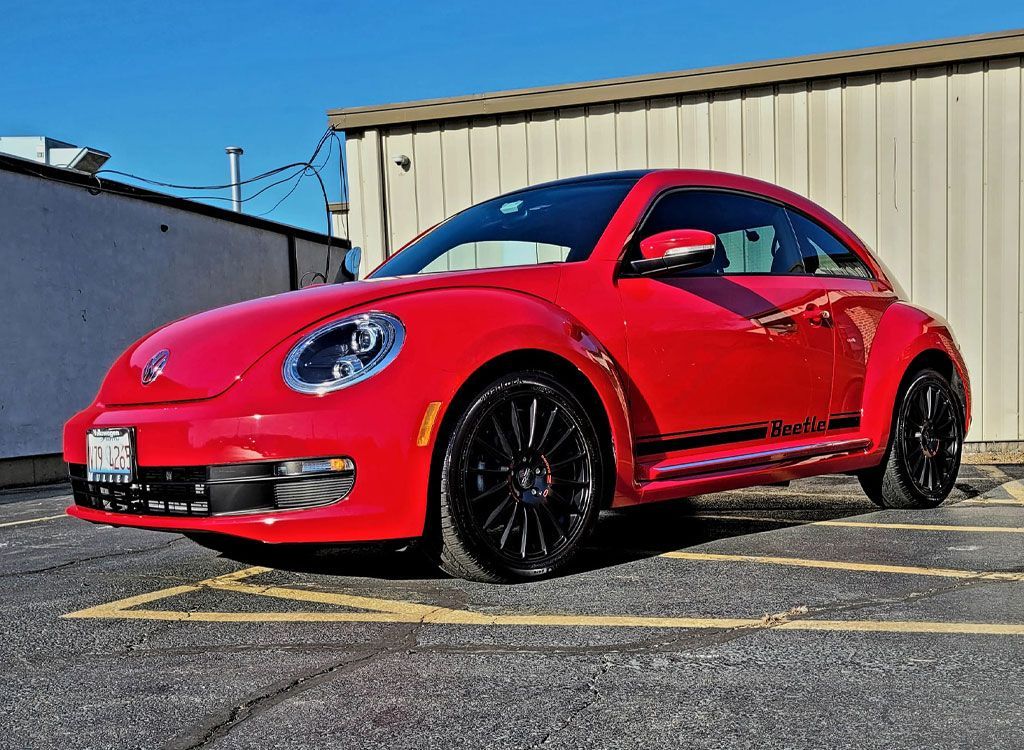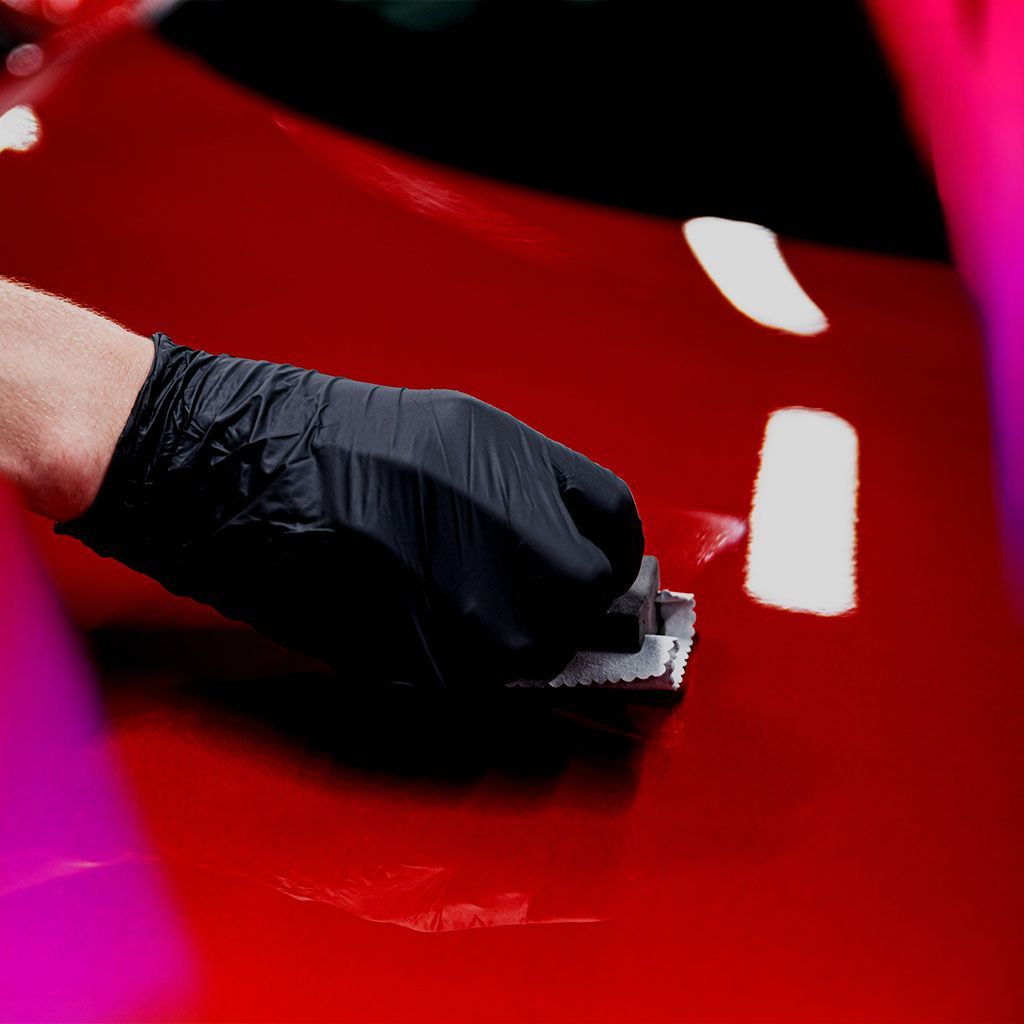Professional vs. DIY PPF Installation: A Comprehensive Comparison
Deciding on professional or DIY PPF installation has a lot to do with the level of quality and comfort you seek. Going for a pro means benefiting from their expertise and access to high-grade materials, ensuring an excellent finish free from creases, bubbles, or misalignment issues. But keep in mind that professionals might ask for higher prices for their services and demand a stricter timeline, which could interfere with your schedule. A twist here is that going the professional route often includes warranty assurance, which could save you time and money down the line if any problems occur.
Professional paint protection film installation offers superior precision, expertise, and access to high-quality materials, resulting in a long-lasting and professionally finished product. However, it comes with a higher price tag compared to DIY installation, which may offer cost savings but requires patience, precision, and research into reputable products. It's essential to consider factors such as time, materials, cost, and potential risks before deciding on vehicle protection measures.
Advantages of Professional PPF Installation
When it comes to preserving and protecting the paint on your vehicle, professional paint protection film installation offers several distinct benefits worth considering.
- Expertise and Precision: Skilled and knowledgeable professional installers bring years of experience to the table when applying paint protection film to your vehicles. Their expertise allows for precise application without bubbles, creases, or misalignment. This level of precision is often challenging to achieve in a DIY setting. By entrusting the installation to professionals, vehicle owners can be confident in the flawless application of the PPF, ensuring full coverage and protection.
- Access to High-Quality Materials: Professional installers have direct access to top-tier paint protection film products that offer exceptional durability, optical clarity, and self-healing capabilities. These high-quality materials provide superior protection for the vehicle's paint against chips, scratches, and environmental damage. While some DIY kits may claim to offer similar benefits, professional-grade materials are often developed with advanced technology and extensive testing to ensure optimal performance. This access to premium materials sets professional installations apart in terms of long-term protective capabilities.
- Warranty Coverage: One notable advantage of professional paint protection film installations is the inclusion of warranty coverage. Many reputable installers provide warranty protection for their work and materials, offering peace of mind and assurance regarding the longevity and performance of the film. This warranty serves as a testament to both the installer's confidence in their workmanship and the quality of the PPF utilized. For vehicle owners, this means added protection against potential defects or issues with the film over time, reflecting a commitment to customer satisfaction and product reliability.
With these compelling advantages, it's clear that professional paint protection film installation presents a holistic approach to safeguarding a vehicle's paint, combining precision application, high-quality materials, and comprehensive warranty coverage for optimal protection and peace of mind.
Limitations of Using Professional PPF Services
While professional paint protection film installation offers many benefits, there are certain limitations that one should consider before making a decision.
- Higher Cost: An important factor to think about is the higher cost associated with professional installation. The expertise and precision of professional installers, access to premium-grade materials, labor costs, and overheads contribute to a substantial price tag. While the initial expense may seem steep, it's crucial to weigh it against the anticipated quality and longevity of the protective film. Consider the value of utilizing premium materials and industry-standard techniques that come with professional services. These aspects often result in a superior finish, extended durability, and enhanced warranty coverage. Moreover, the use of high-quality materials can lead to better protection against environmental elements, such as UV rays and rock chips, ultimately preserving the vehicle's appearance over a longer period of time.
- Less Flexible Scheduling: Another consideration is the scheduling constraints that come with professional installations. Booking an appointment with a reputable installer may require aligning with their availability, meaning you must adhere to their timeline. This lack of flexibility could be challenging for individuals who have busy or fluctuating schedules. It's important to communicate your availability and discuss scheduling options before committing to the installation. It may be helpful to inquire about potential accommodations for unique scheduling needs or explore alternative arrangements offered by the installation service. Some providers may offer mobile services or extended hours, which could alleviate scheduling conflicts for customers with limited availability during regular business hours.
By evaluating these limitations alongside the advantages, individuals can make an informed decision that best aligns with their priorities and circumstances.
Benefits Drawn from DIY PPF Installation
DIY (do-it-yourself) paint protection film installation offers a range of advantages for car owners who are up for the challenge. Here are some compelling reasons why many enthusiasts and budget-conscious individuals opt for this route:
- Cost Savings: One of the most attractive aspects of DIY paint protection film installation is the potential for significant cost savings. By eliminating labor expenses associated with professional installation, car owners can save a substantial amount of money by taking on the task themselves. This is particularly appealing for individuals who wish to protect their vehicles without incurring the additional costs of professional services.
- Learning Opportunity: Beyond the financial benefits, DIY paint protection film installation serves as an invaluable hands-on learning experience. It provides car owners with the chance to develop skills and knowledge related to car detailing and protection. By mastering the techniques involved in applying PPF, individuals gain a deeper understanding of how to safeguard their vehicle's exterior while enhancing its visual appeal.
For many car enthusiasts, the process of applying a paint protection film represents an opportunity to engage with and understand their vehicles at a deeper level. It fosters a sense of pride and accomplishment, knowing that they have taken an active role in preserving and enhancing their vehicle's appearance. Additionally, acquiring these skills empowers car owners to maintain their vehicle's aesthetics and protection over time, reducing dependence on external service providers. Moreover, the learning experience gained from DIY paint protection film installation extends beyond the immediate task at hand. It opens doors to exploring other aspects of vehicle maintenance and care. As individuals become more familiar with the intricate details of PPF application, they gain insight into broader areas of automotive maintenance and protection, ultimately becoming better informed and proactive car owners.
Potential Risks in DIY PPF Application
Embarking on a DIY paint protection film application without professional expertise can introduce a range of risks that may jeopardize the results and longevity of the protective film. One significant risk is the increased likelihood of mistakes during the installation process. For example, without the precision and experience of professional installers, air bubbles, misalignment, or uneven application may occur, leading to aesthetic imperfections that could affect the overall appearance of the vehicle and compromise the functionality and protective aspects of the paint protection film.
Air bubbles may seem harmless at first glance, but they can affect the adhesion of the film to the vehicle's surface, reducing its effectiveness as a shield against road debris and environmental damage. Misalignment and uneven application can create visible seams and edges, undermining the seamless coverage that a professionally installed PPF provides. While DIY enthusiasts may be willing to deal with mistakes during their installation process, it's vital to recognize that such errors can have long-lasting consequences for both the aesthetic and protective properties of the paint protection film. In addition to these challenges, successful DIY installation requires access to adequate space, proper lighting, and specialized tools that may not be readily available to all car owners. Without suitable workspaces and resources, even meticulous efforts in the PPF application may fall short of achieving the desired results.
Car owners embarking on a DIY route must ensure that they have ample space to spread out and maneuver around the vehicle during the installation process. Limited or cramped areas can impede proper positioning and hinder the precise application of the film. Moreover, insufficient lighting can obscure imperfections during installation, potentially resulting in overlooked errors that become apparent only after completion. Equipment such as squeegees, heat guns, and precision cutting tools is integral to ensuring a seamless and durable application. However, acquiring these tools may pose a challenge for individuals who do not possess them or are unwilling to invest in items they may use only once.
Understanding these potential risks associated with DIY paint protection film application is paramount for car owners weighing their options between self-installation and professional services. It's crucial to carefully evaluate one's skill level, resources, and willingness to address these challenges before committing to a course of action.
Comparative Analysis: Quality, Cost, and Time
When it comes to quality, professional installers bring extensive expertise and precision tools, resulting in superior outcomes. Their work tends to be more precise due to their thorough training and specialized equipment. Conversely, DIY installation might lack the same level of precision as it relies on individual skill without access to these specialized tools. Professional paint protection film installations generally yield seamless integration with the vehicle's aesthetics, while DIY installations may have visible seams or imperfections due to the lack of specialized techniques. Additionally, high-grade films used by professionals offer a polished finish that may not be achieved through DIY methods.
Quality is especially crucial when it comes to protecting your vehicle from damage. A professionally installed film not only protects against stone chips and scratches but also maintains the original appearance of your vehicle, ensuring a sleek and polished look. Moving on to cost, DIY installations may seem appealing due to initial cost savings as there are no labor fees involved. However, this may lead to additional costs down the line if the quality of materials used isn't up to par. On the other hand, professional installations may involve higher upfront costs but offer access to high-quality materials along with expertise and warranty coverage.
It's important to consider the long-term implications of material quality. High-grade films used in professional installations tend to be more durable and visually appealing compared to lower-grade ones often included in DIY kits. These quality discrepancies can ultimately impact the longevity and visual appeal of the PPF.
Consider Long-Term Expenses
While DIY installation can present an opportunity for cost savings initially, it's important to factor in potential future expenses associated with repairs or replacements due to lower-quality materials. DIY installation allows for flexibility in scheduling since you’re working at your own pace, which can be appealing for some individuals. However, professional installation services generally complete the job faster and with greater accuracy using premium-grade materials. The expertise and efficiency of professional installers mean that you'll have your vehicle back sooner with a perfectly applied film that's ready for action. This is particularly valuable if you lead a busy lifestyle and need your vehicle back on the road quickly.
Considering these factors—quality, cost, and time—can help you make an informed decision when it comes to choosing the right paint protection film installation method for your needs. Both options have their advantages and drawbacks, so it's crucial to weigh them carefully before making a decision.
Selecting the Right Approach for Your Car's PPF Installation
Choosing between professional and DIY installation methods can be a tough decision. It's essential to consider several key factors to make the most informed choice for your vehicle's paint protection. First, let's consider your budget. Professional installers often charge a higher price for their expertise and access to premium-grade materials, but for those considering DIY, there may be an opportunity to save a substantial amount by opting for a self-installation kit.
Cost isn't the only deciding factor; time is also crucial. DIY installations can take quite a bit longer due to the learning curve and precision required. Conversely, professional PPF installers are skilled at completing the job efficiently and accurately. If you're on a tight schedule or have limited time for installation, this is an important factor to consider. Accessibility to materials and tools is another point to ponder. DIY projects require gathering all the necessary products and ensuring you have the right tools for installation. On the contrary, professional installers have easy access to high-quality materials and specialized tools needed for a flawless application.
The quality of the installation is imperative. Professional installers are typically experienced and can provide a level of precision that may be challenging to replicate in a DIY project. They also commonly offer warranty coverage, adding an extra layer of protection. With all these factors in mind, it's crucial to compare and assess trade-offs based on your personal priorities. While DIY may save money upfront and offer flexibility, it requires patience, research into reputable products, and potential space and tool requirements. Professional installation offers access to expertise and high-quality products but is generally less flexible in terms of scheduling.
By weighing these considerations, you will be better equipped to make an informed decision about whether DIY or professional paint protection film installation is the right fit for you. Keep in mind that your decision should align with your specific needs, preferences, and capabilities.
Cutting-Edge Paint Protection Film Services in Elgin, IL
Experience unmatched protection for your vehicle's paint with CM3 Detailing Studio & Ceramic Coating's
cutting-edge paint protection film services in Elgin, IL. Our expert team meticulously applies high-quality films to shield your car from scratches, dents, and environmental hazards, ensuring its pristine appearance for years to come. Don't compromise on protection—schedule your appointment today and safeguard your investment with CM3 Detailing Studio & Ceramic Coating. Call us at
(630) 400-6766 to get started!









